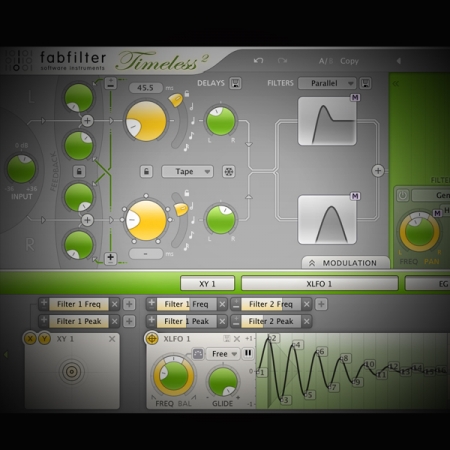Using a Delay to Manipulate Stereo Width
Using a delay effect to create and manipulate stereo width. Make your mixes wider!
Beat Construction
Purchase to view this tutorial
By purchasing this tutorial, you'll get immediate access - your purchase helps create new and exciting content and this site survive!
£1.00Add to basket
Using Delay to Manipulate Stereo Width is a detailed video tutorial explaining how to use a delay effect to manipulate the stereo width of audio.
Stereo wideners are all the rage nowadays. It seems that producers love to widen their mixes so as to afford a hyped stereo image. The idea is to give the listener an immersive experience with sounds that seem to move in 3D rather than 2D. However, one of the problems associated with too much widening is that of stereo field collapse. There comes a point whereby too much widening will result in a skewed stereo image where the middle information is lost and the sides collapse.
Most stereo widening trickery incorporates the Haas Effect and the process we are going to explore is that of using a stereo delay to create width on a drum beat.
Haas Effect
The Haas effect, also known as the precedence effect, is a psychoacoustical effect described in 1949 by Helmut Haas that pertain to the localisation of sound sources. In a nutshell: when one sound is followed by another with a delay time of approximately 40 ms or less the two sounds are perceived as a single sound.
The most common Haas effect technique is to create a copy of the audio you want to widen, pan each copy to the stereo field extremes (L and R) and apply a small delay to one side. This comes across as a single large stereo field of sound.
Stereo Wideners
The problems associated with stereo wideners when used on stereo sources are that when summed to mono the stereo widening effect is lost and the sound comes across as just an echo albeit with a ton of phasing artifacts. That is not to say that stereo wideners cannot be used on sound sources or entire mixes – it is simply a case of managing mono sources within a mix context and excessive use of wideners can actually play against you.
A better approach is to use stereo wideners that use Mid/Side processing.
Middle and Side
Basically, the stereo sound is split into middle (M) and sides (S) using a process we call ‘Matrixing’. Once the signal is in M/S we can treat the sides (known as the difference) and the mid (known as the sum) separately. After the processing, the signal is encoded back into the standard stereo format. This process may sound complicated but when you see it in action you will realise how simple it is to use and yet so powerful in action.
Most stereo wideners use Mid/Side processing to allow the user to work on either component in isolation. By inverting the phase of each channel and adding a small amount of this phase-inverted signal to the opposite channel, you can add spaciousness to any stereo sound. Some stereo widening plugins incorporate this exact process and the results can be both pleasing and solid in control.
There are many ways to apply widening processes to a sound: from using stereo effects to phase trickery, from panning mono sources to phase inverting one channel and feeding it into the other channel and so on. In fact, most of today’s processing plugins come with some form of stereo widening but in this tutorial, we are going to use the Old School technique of using a stereo delay to create stereo width.
In the Using Delay to Manipulate Stereo Width video, I show you how to use a stereo delay plugin to manipulate the stereo width of a drum beat. I explain all the functions of the stereo delay and how to use it to manipulate the stereo width of the drum beat. I run through all the parameter settings making sure to provide you with the best settings to use in your mix projects. I end the tutorial by showing you how the filters in the delay processor can have a huge impact on the perception of the stereo field.
The plugin used in this video:
Topics covered in this video are:
- What is Stereo Width
- Using Dual Mono for Width
- What is a Delay effect
- How to use a Delay
- Modulation and the Matrix
- Timeless Delay effect configuration and tricks
- Nodes and Filtering
If this tutorial was of help maybe these will also be of benefit:
Delay Effect – what is it and how does it work
Using a Flanger to create Stereo Effects
Delay Effect – Cross Feedback and Style
Using a Delay to create a Crackle Effect
Using a Delay to create Chorus
Studio and Multi Effects Masterclass

